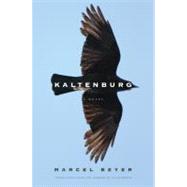
What is included with this book?
The New copy of this book will include any supplemental materials advertised. Please check the title of the book to determine if it should include any access cards, study guides, lab manuals, CDs, etc.
The Used, Rental and eBook copies of this book are not guaranteed to include any supplemental materials. Typically, only the book itself is included. This is true even if the title states it includes any access cards, study guides, lab manuals, CDs, etc.
1
Ludwig Kaltenburg is always waiting for the jackdaws to return, right up to his death in February 1989. Even in his last winter, he confidently tells visitors that one day a pair of the white-eyed corvids which he loves, which he admires, will choose his study chimney for their nesting site and found a new colony of jackdaws with their brood. “I know they won’t start building their nest for a few months yet,” he tells his guests, disciples, or journalists who have driven for nearly an hour from Vienna through the snowy landscape of Lower Austria. The future is clear to him, he says. Wrapped in a woolen rug, the great zoologist Ludwig Kaltenburg sits at the window, plaid pattern, full white hair. His hearing is very poor, but his mind has lost none of its sharpness.
“Birds shy away from smoke,” he says, and that’s why he’s against keeping the small stove in his little annex burning all day long: electric heaters frame the late-period Kaltenburg. His mood is relaxed. “I’m fully aware that the young jackdaws will have to manage without me.”
Before his guests can politely protest that the distinguished Herr Professor will outlive them all, Kaltenburg describes how a so-called chimney jackdaw makes its way down to its nest in complete darkness. After some hesitation and a few trial runs, the bird dives beak-first into the entrance of the artificial cave, rights itself, spreads its wings to get a hold on the rough chimney walls, stretches out its legs, and pushes off with its claws. Then on it goes cautiously, step by step so to speak, two meters or more down into the depths. Loud flapping, scraping, scrabbling. Snapshots of this procedure, taken many times over a day, give the impression that the jackdaw is plummeting helplessly from a great height, but the opposite is true: every movement demonstrates considered action and extreme skillfulness.
Nobody dares contradict the professor. His last colony collapsed many years ago, but still no one knows as much about jackdaws as Ludwig Kaltenburg. In icy January he projects for himself and his guests the doings of future generations of jackdaws, and when he spins around in his wheelchair, many a visitor is uncertain whether he is actually hearing the sound of rubber tires on parquet or the quiet call of a jackdaw convincingly mimicking the squeak of wheels. Kaltenburg inclines his head as though listening. The radiators hum. In the chimney a jackdaw’s wing brushes across the sooty brickwork.
2
Birds shy away from smoke. Kaltenburg is eighty when he begins to part with his old papers: they feel to him more and more like lumber. Instead of burning all these memos, lecture notes, pocket diaries, essay drafts, and bits of correspondence, he entrusts the papers with relish to his charges, piece by piece. All the preparatory work for his 1964 publicationArchetypes of Fear,after lying neglected for more than two decades, shut away in a Maria Theresa strongbox, is now put to new use.
Over a few fine spring days Ludwig Kaltenburg distributes the manuscript pages of his draft copy among the resident rodents and waterfowl as nesting material. He hands over half a dozen pages of keyword lists to a young stoat with whom he feels a friendly affinity. Then, in the summer, Kaltenburg sits on the terrace behind the house, looking out over the spacious garden, the pond, the meadow, and eventually takes a handful of notes out of the shoebox on his knees. When the ducklings come home with their parents at sunset, they gratefully accept the activity provided by the woody paper.
He has always regardedArchetypes of Fearas a kind of turning point in his life’s work. The first book produced back in his native Austria after a twelve-year absence. The first in which Kaltenburg draws openly on observations made during his time in Dresden, although the introduction emphasizes that the idea came to him while snorkeling off the coast of Florida. His first extended study since the end of the Second World War which is not immediately translated into Russian, apart from an incomplete summary that circulates in samizdat form. It is only in 1995, prompted by the sixth anniversary of his death, that a small specialist publisher in St. Petersburg brings out a complete edition, a reliable translation but unfortunately given a misleading title, which in English would read something likeI, Ludwig Kaltenburg, and Fear. The Soviet Union has vanished from the map, and Russian readers are no longer interested in the writings of a zoologist called Kaltenburg.
The book’s very existence was ignored. Its author was passed over in silence. He was loudly condemned. Harshly attacked. Ostentatiously shunned at conferences. Colleagues in the USA accused him of naiveté, colleagues in Europe of dubious methods. Educationalists and conflict studies experts alike were still up in arms in the 1980s about his statement that as a potential lifesaver, fear is a truly marvelous natural mechanism. During a televised discussion, a friend of Kaltenburg’s younger days is said to have turned straight to the camera—“Ludwig, I know you’re watching right now”—and strongly urged Kaltenburg to concentrate on his own field and put speculation about the nature of man behind him for good and all. WithArchetypes of Fear, Ludwig Kaltenburg achieves worldwide recognition.